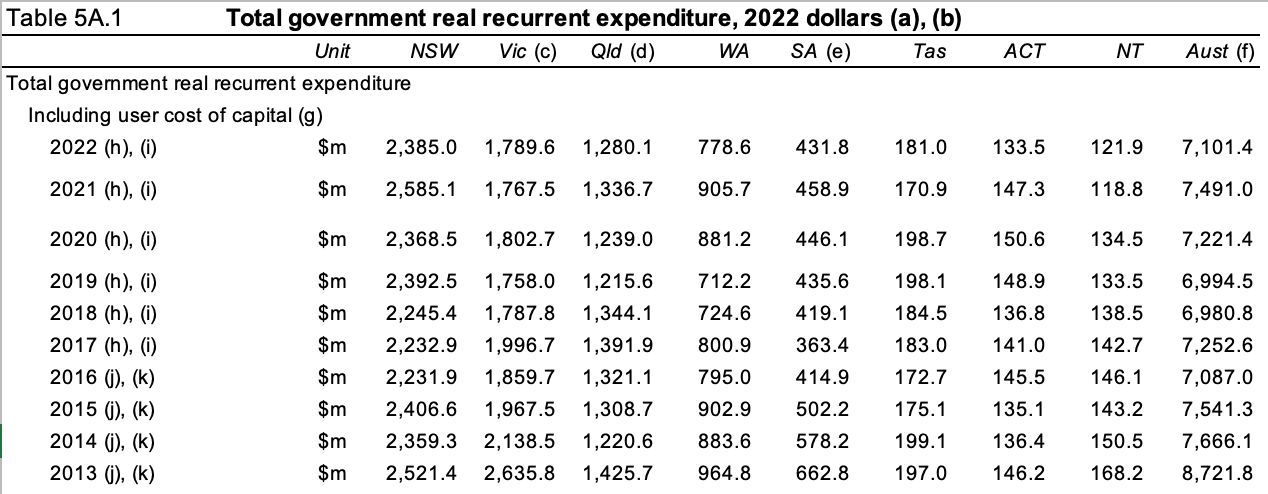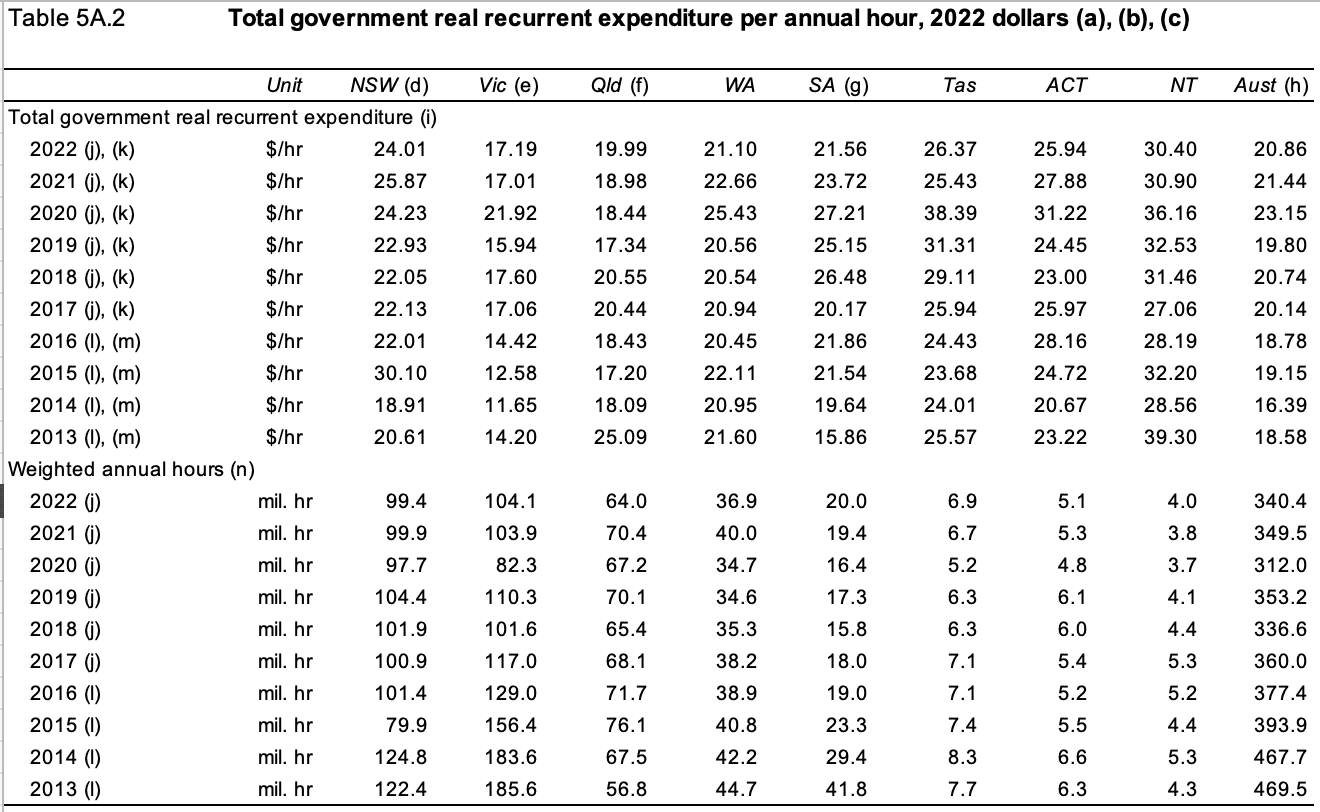
Trends in government-funded VET
The release of the Productivity Commission’s annual Report on Government Services got very little attention last week, but is worth looking at for what it shows in terms of state-level differences in VET and national trends in the sector.
Firstly look at the declining government investment in/expenditure on VET over the last decade (in all jurisdictions) and in the last 12 months (everywhere except 3 jurisdictions)


The amount of training governments are funding in their jurisdictions varies based in part on the average recurrent expenditure per annual hour. Looking at the two largest jurisdictions: NSW and Victoria – it is evident that despite NSW spending an extra $600m in 2022, the Victorian government funded 5 million more hours of training delivery than NSW – because it funds at a much lower average rate per annual hour (the lowest in the country).
NSW is clearly a geographically much bigger state than Victoria and hence has more regional and rural delivery which comes at a higher cost – but across the five largest states there are two clear outliers: NSW and Victoria.

There have also been changes in the amount of funding provided to non-TAFE providers in different jurisdictions.
Note the high proportion of funding to non-TAFE providers in South Australia (due to the changes made under the previous government to restrict TAFE SA delivery in Adelaide, a decision which has subsequently been wound back by the new Labor government – so although the funding increased to South Australian private providers in 2022 it will show a decline in the 2023 figures), as well as in Queensland and Victoria.
Note also that funding is being rolled back from private providers in Western Australia, Queensland and Victoria, while the Northern Territory government chose to increase the share of funding available to private providers by 25%, and the NSW and Tasmanian governments made very modest increases in their level of funding going to non-TAFE providers.





